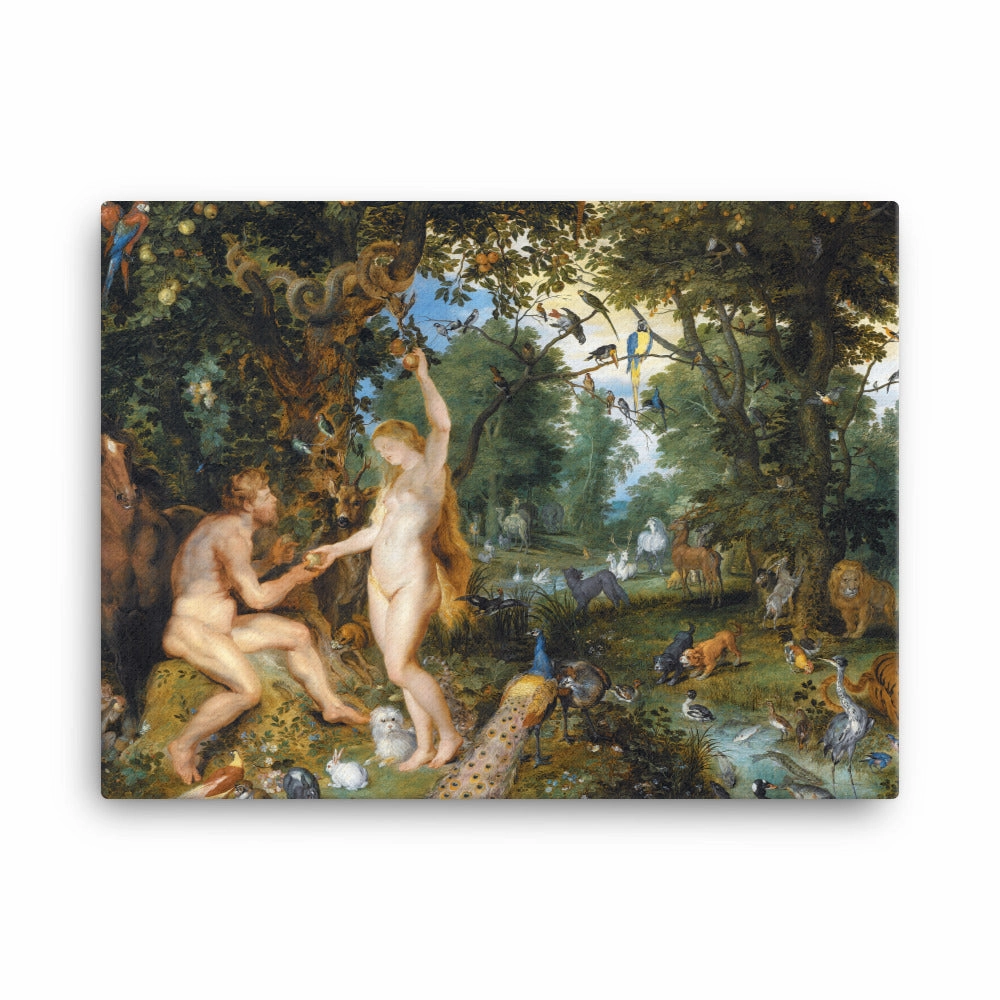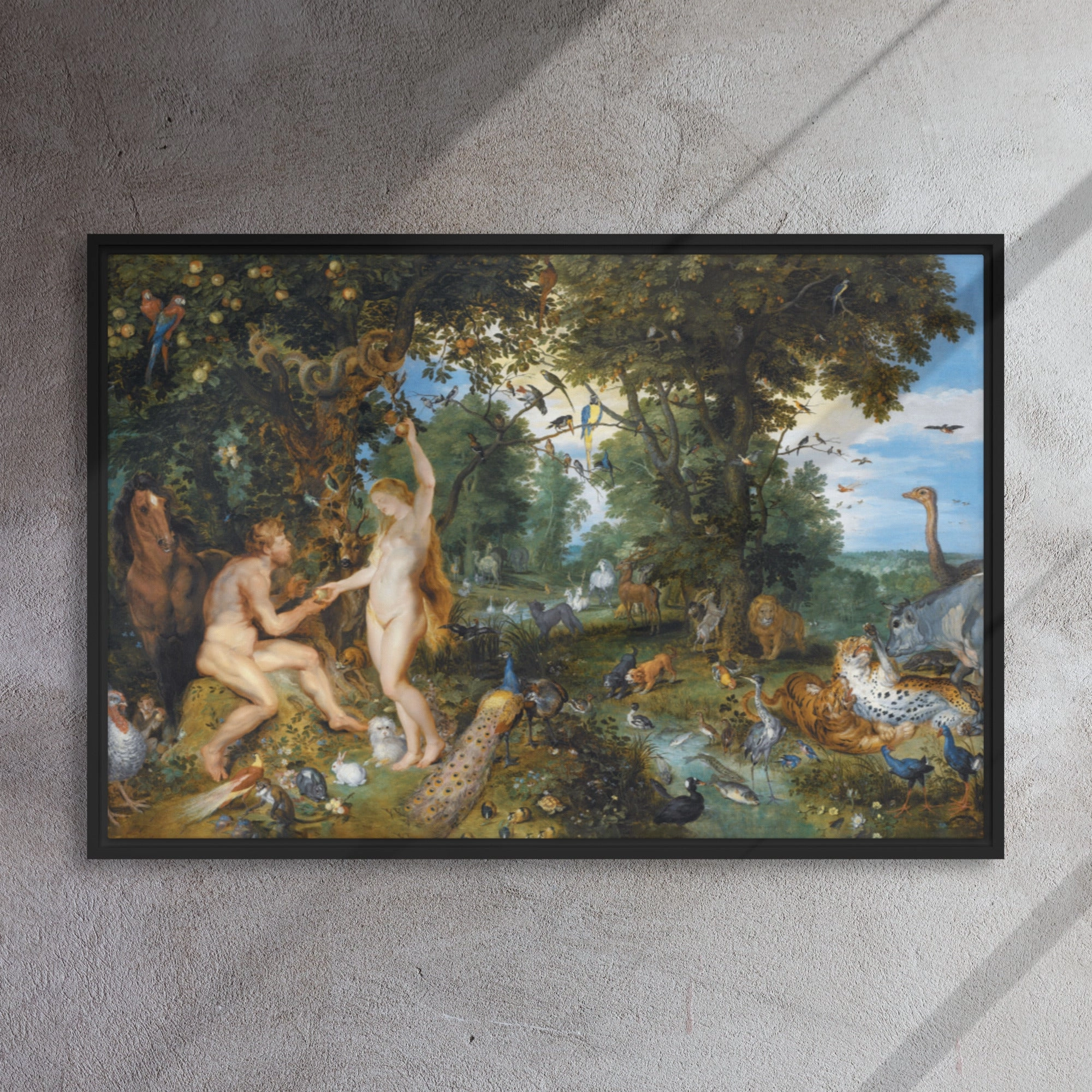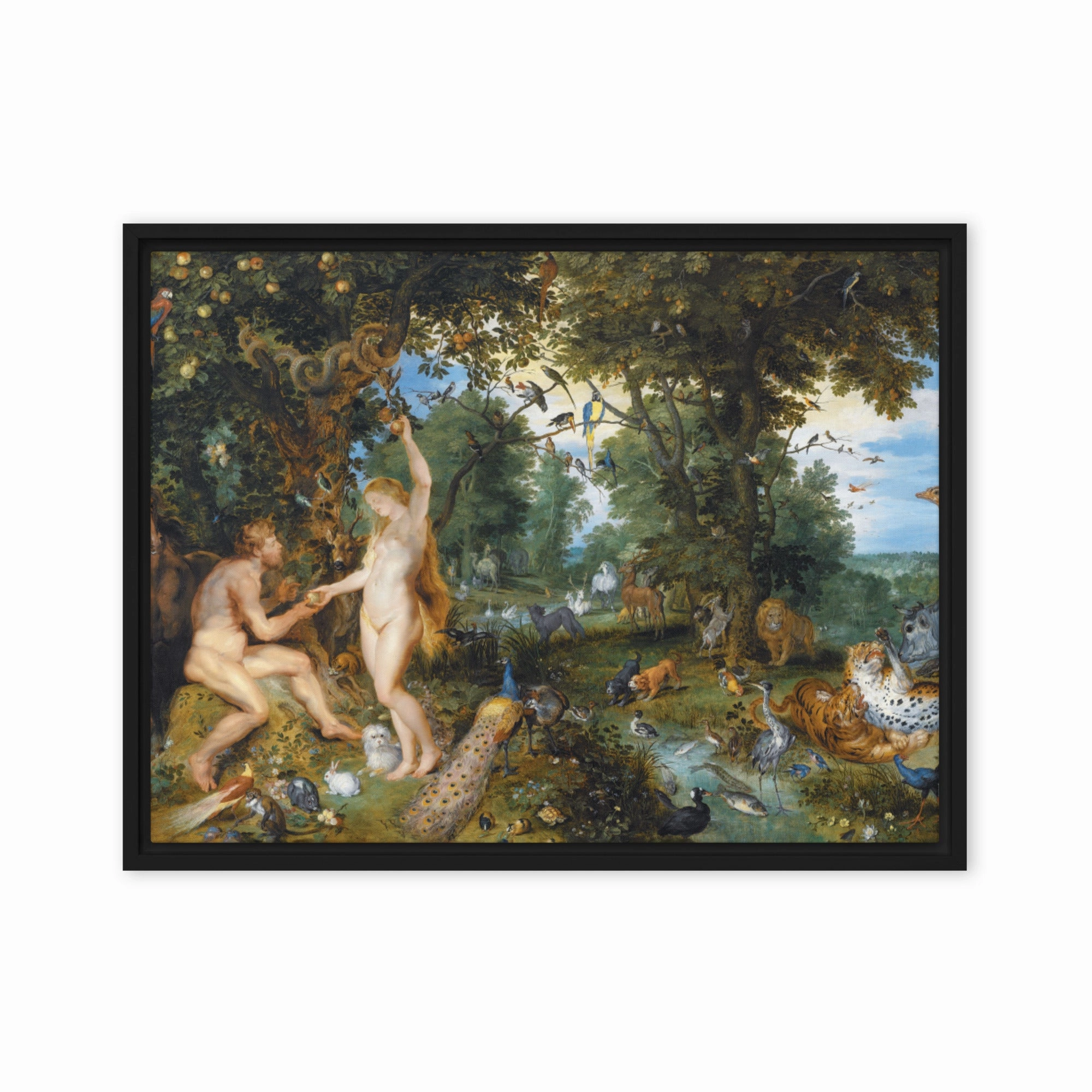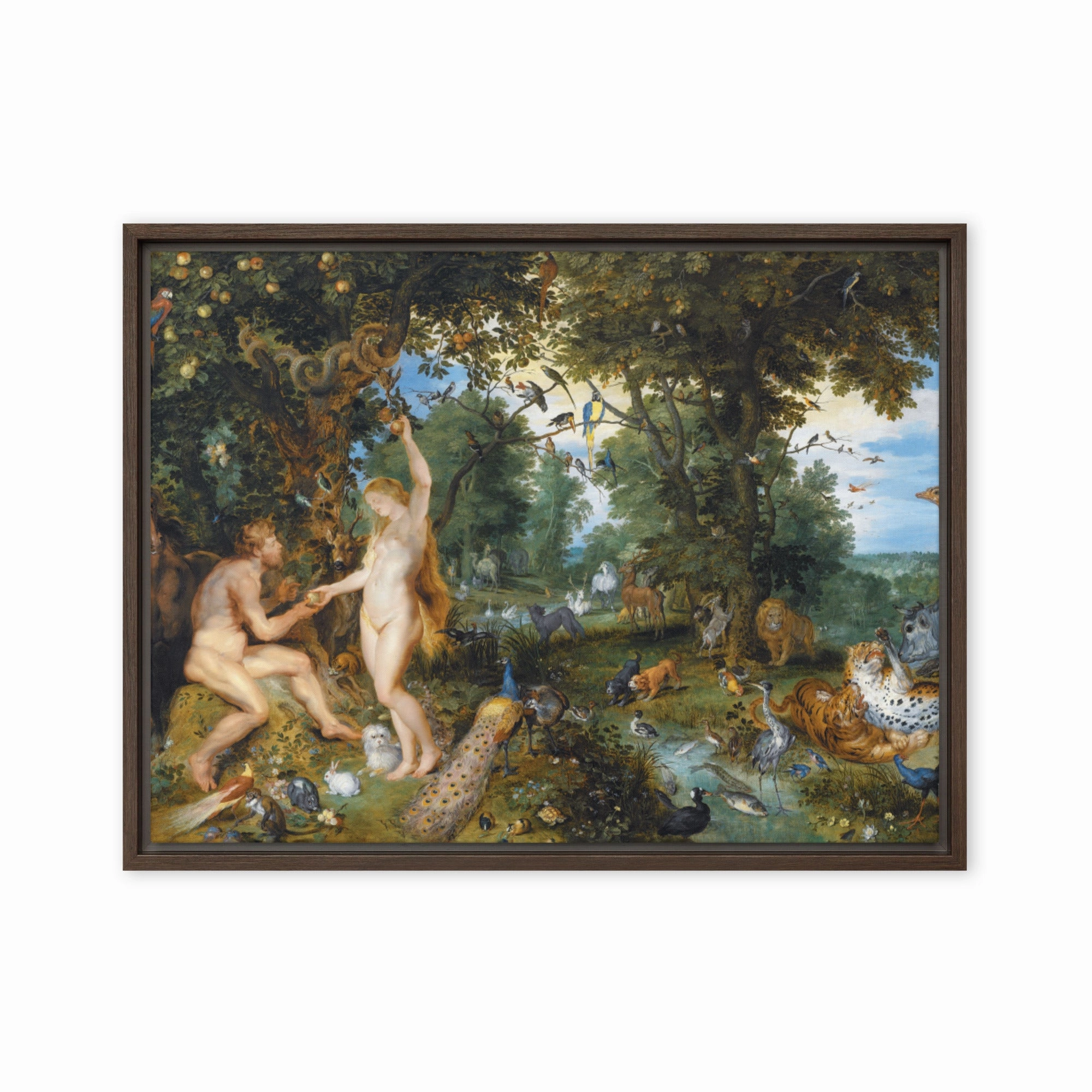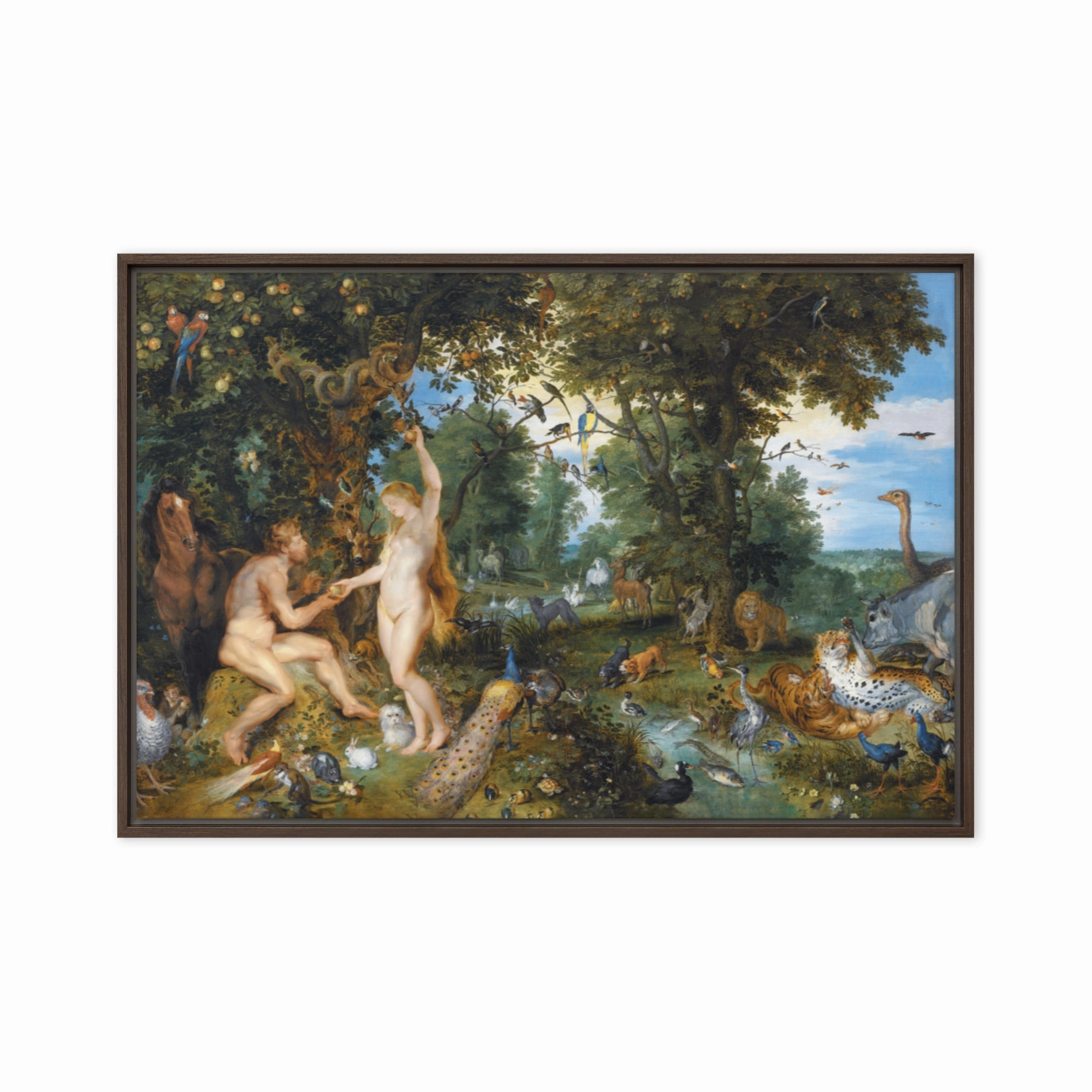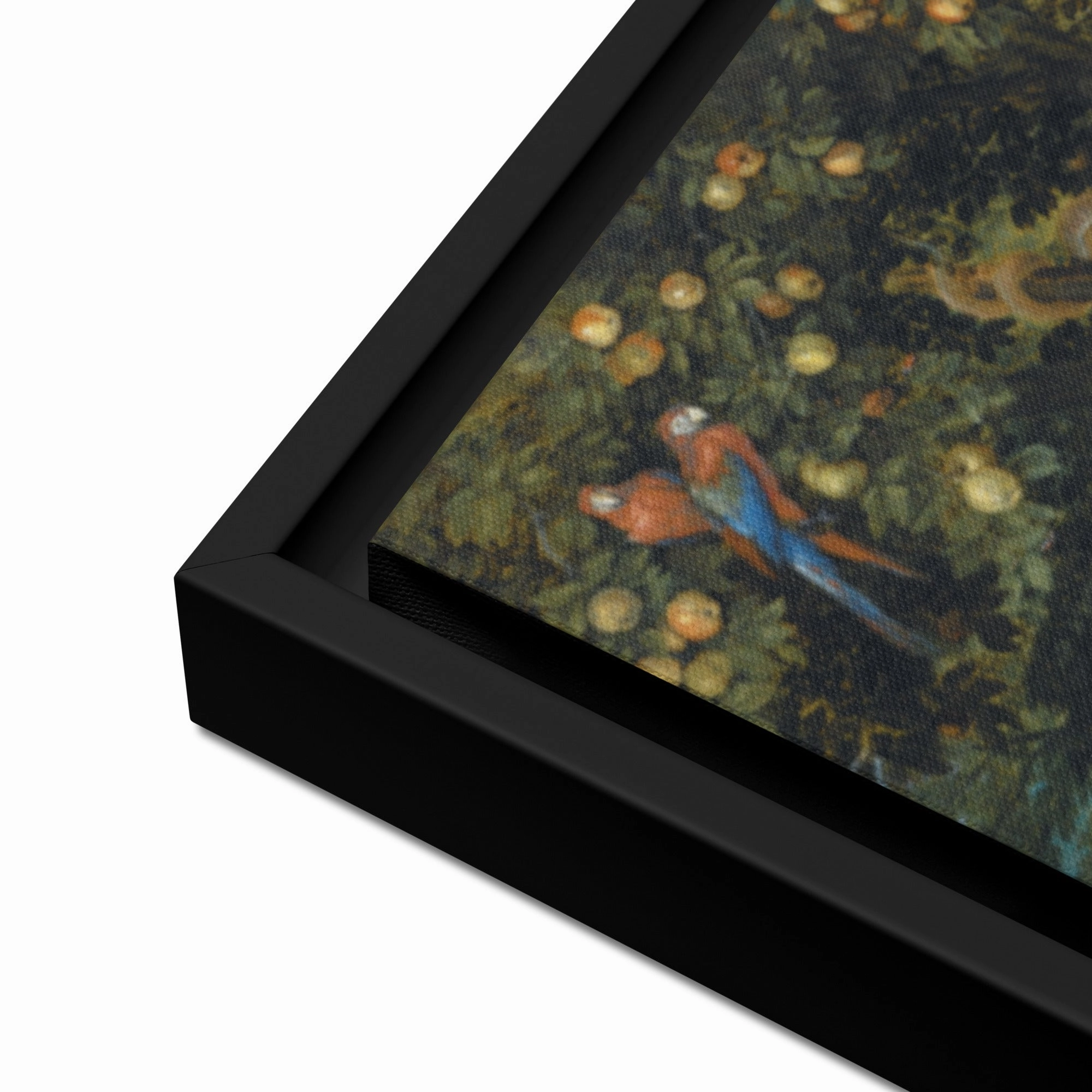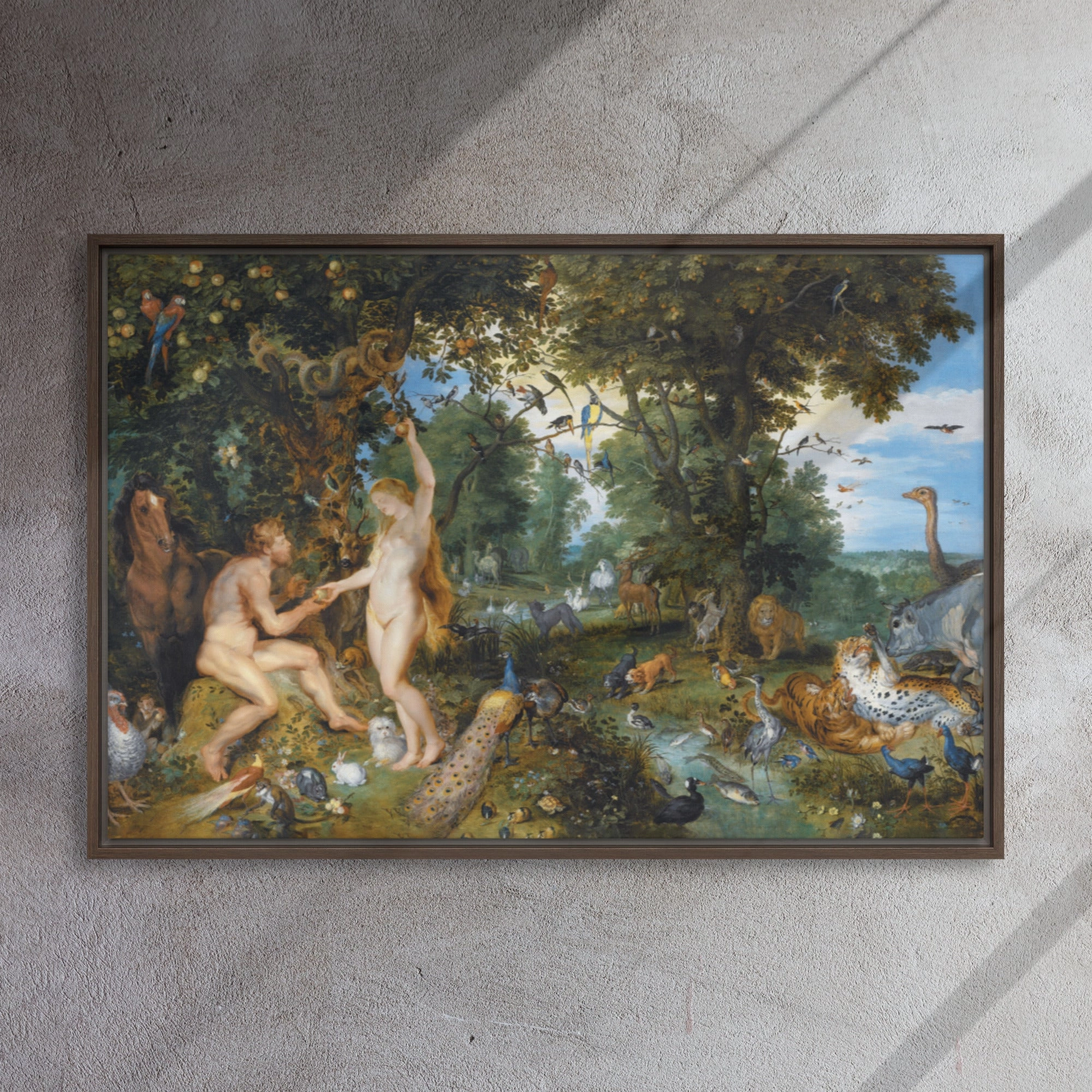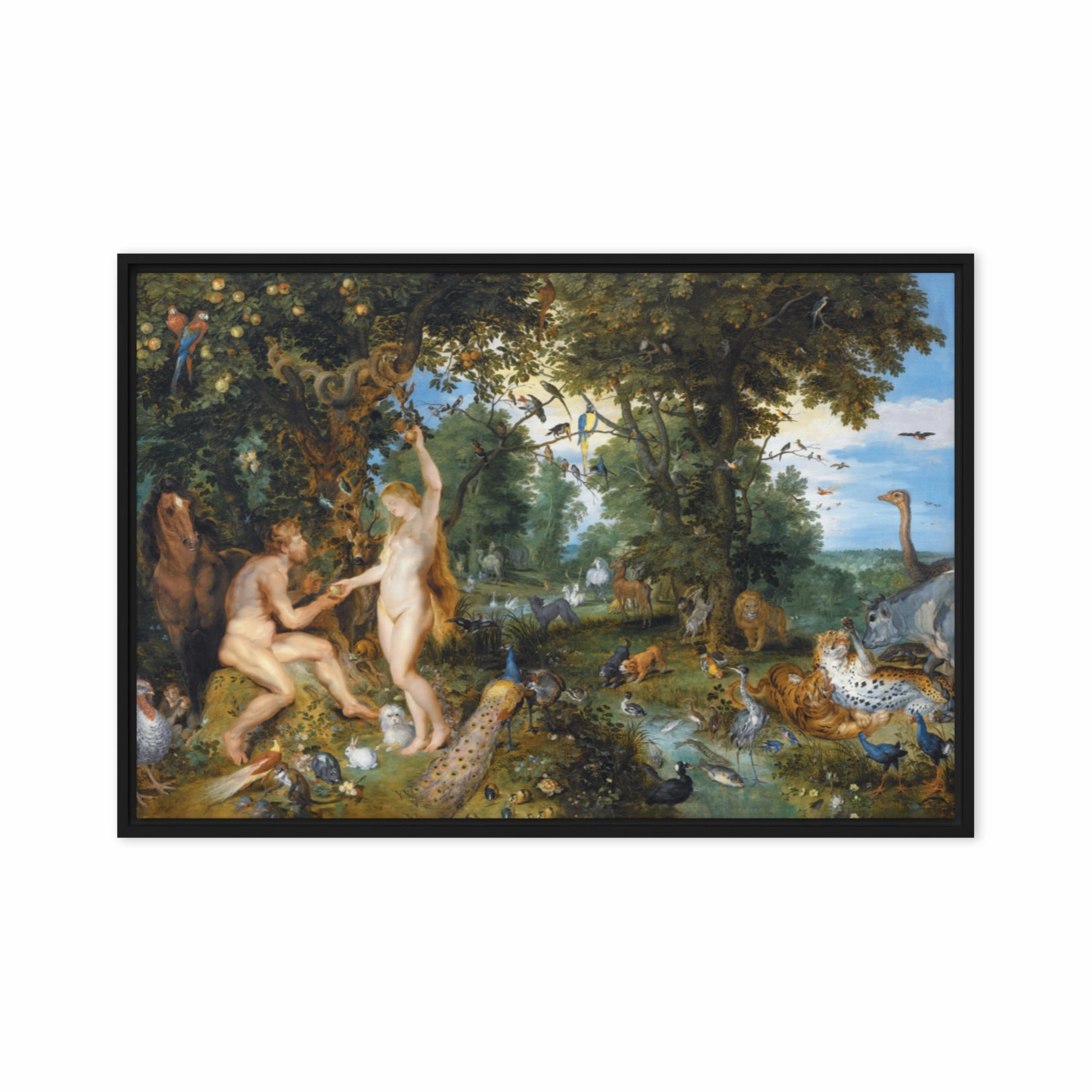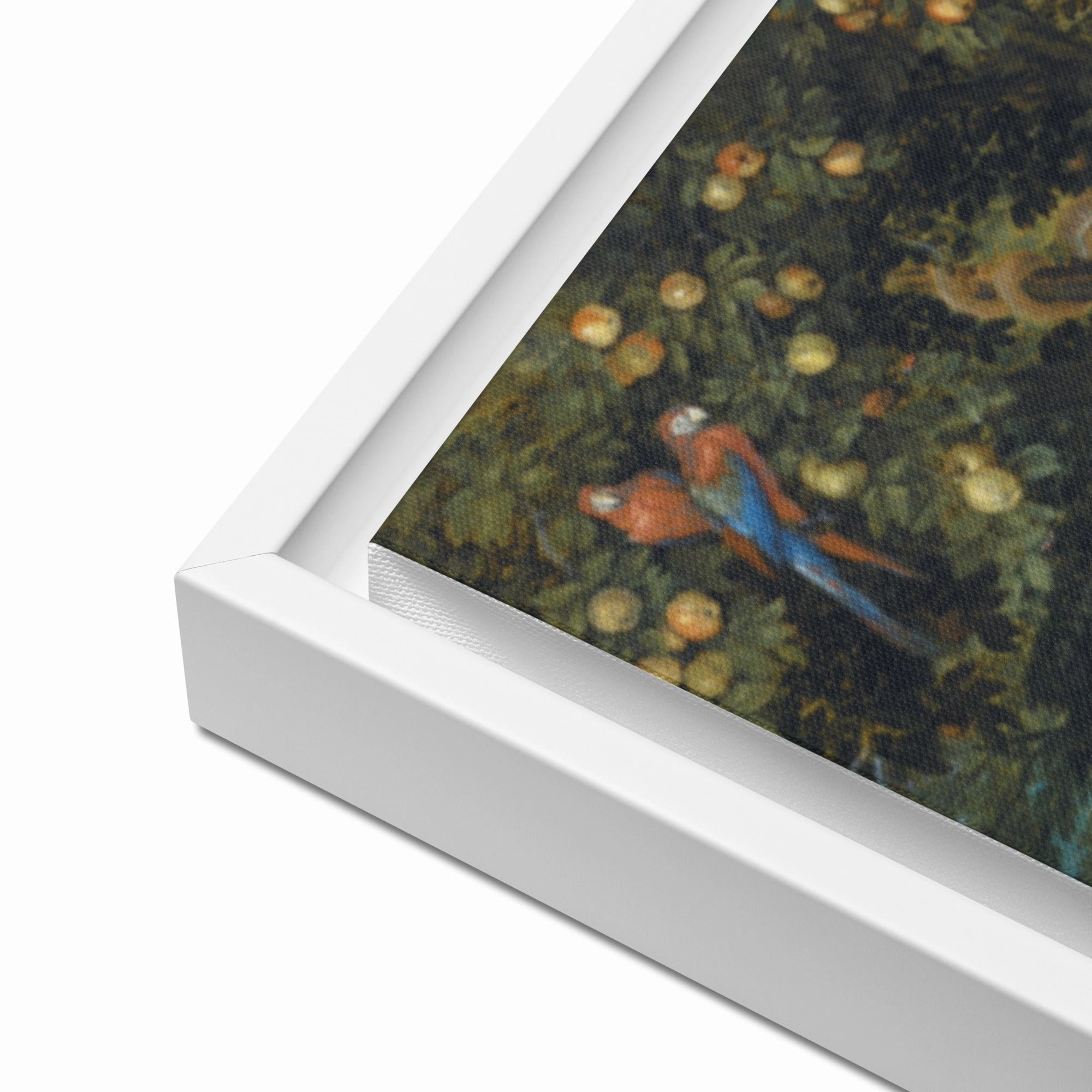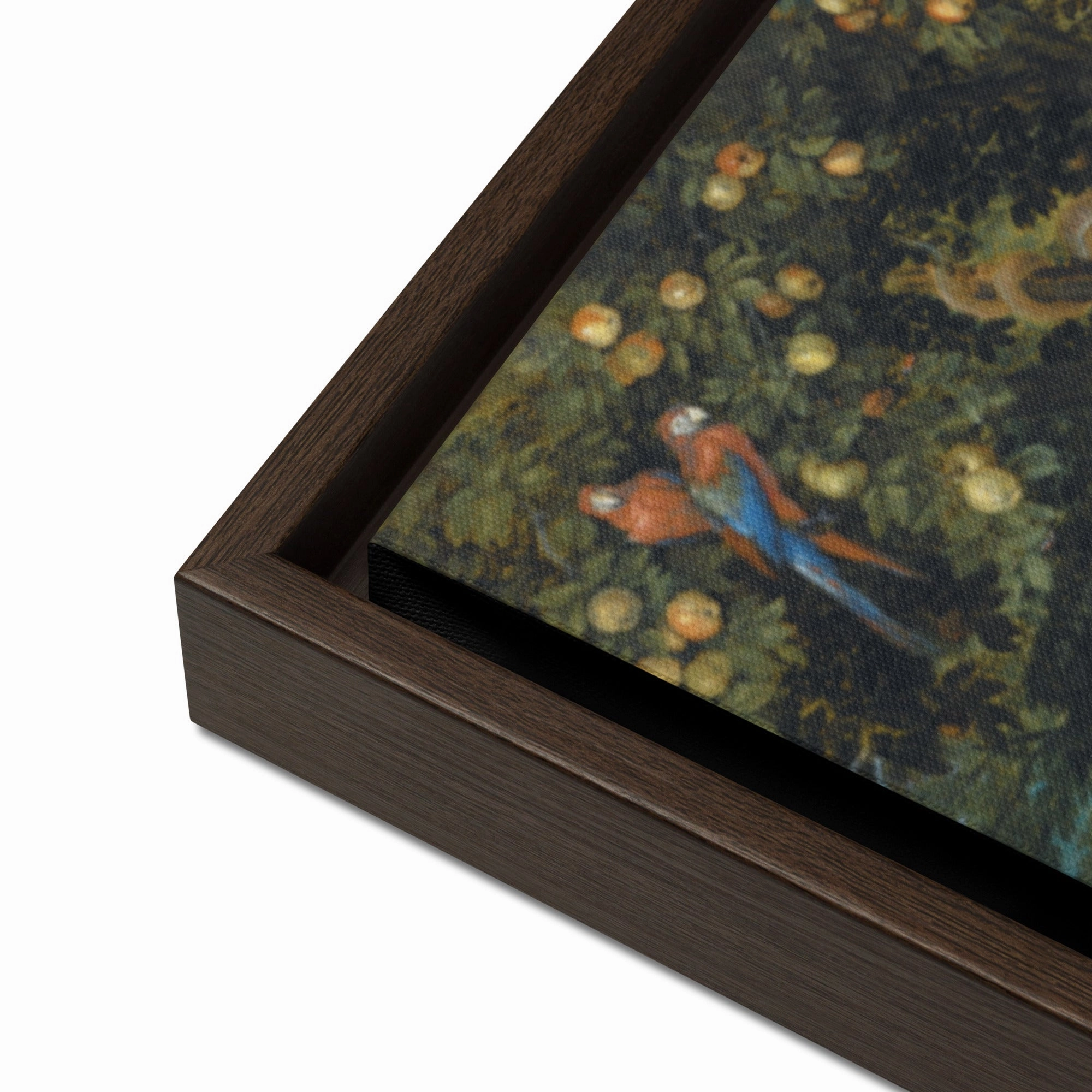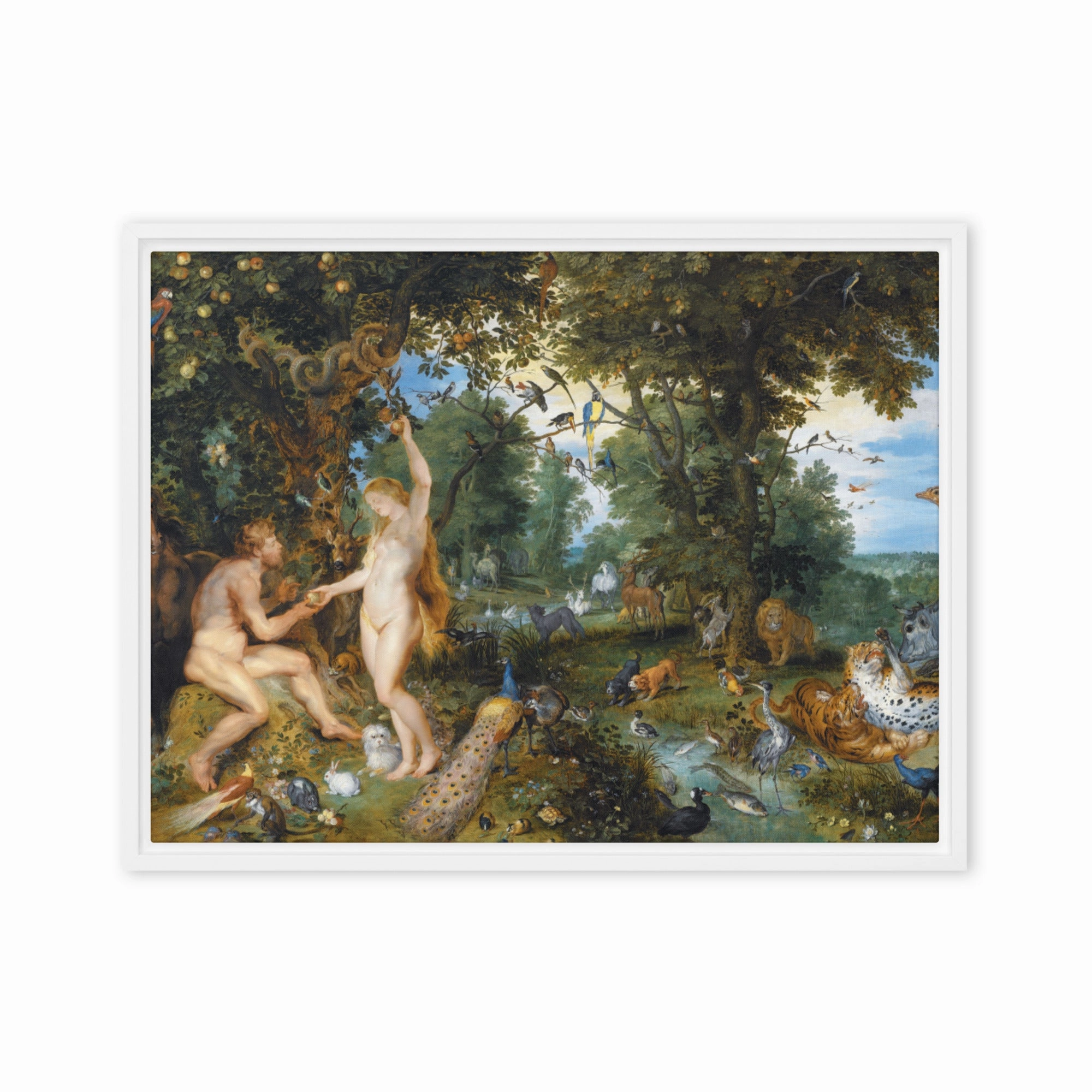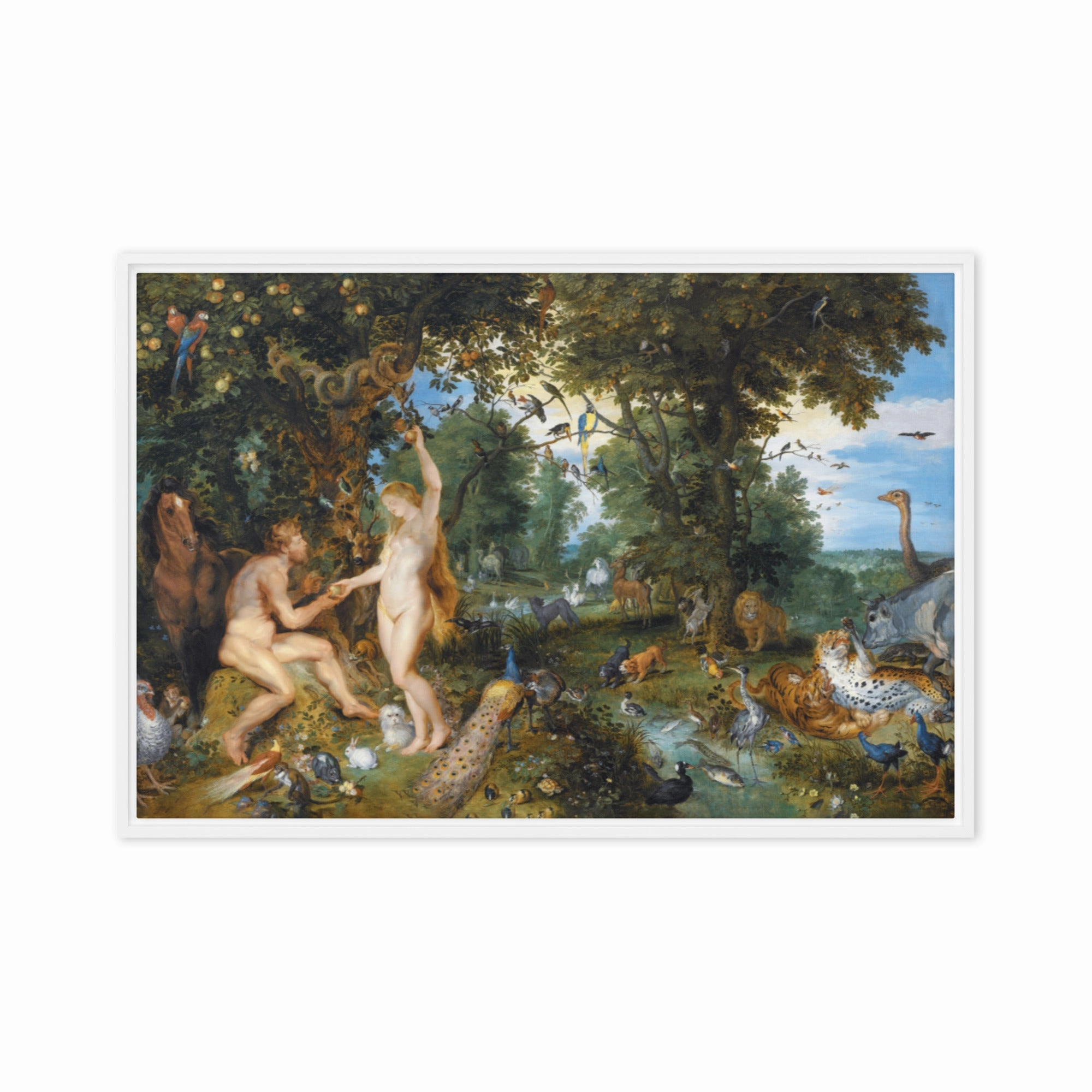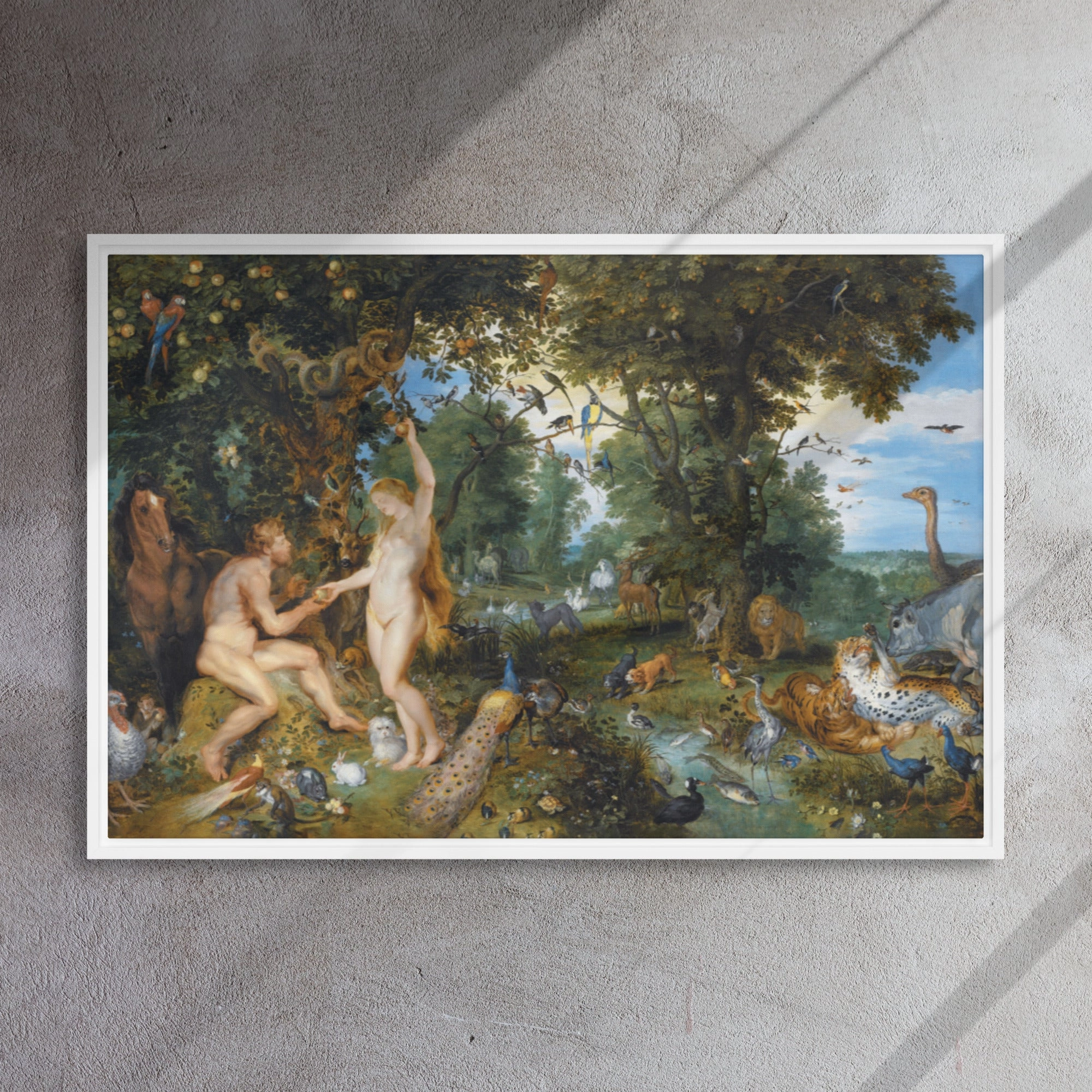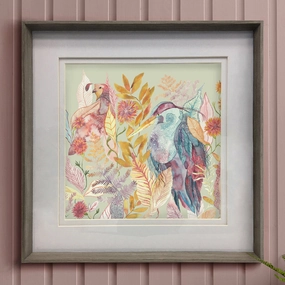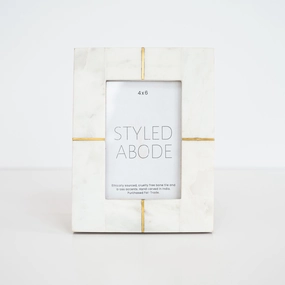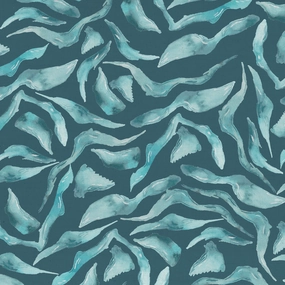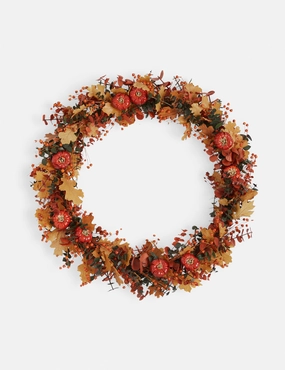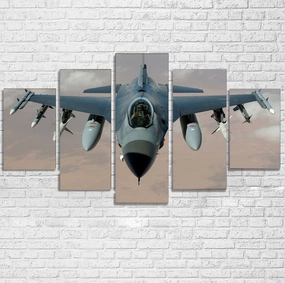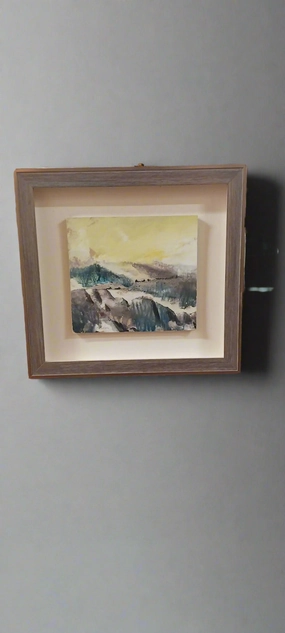The Garden of Eden with the Fall of Man or The Earthly Paradise with the Fall of Adam and Eve (ca. 1615) is a painting by Peter Paul Rubens (figures) and Jan Brueghel the Elder (flora and fauna). It is located in the Mauritshuis Art Museum in The Hague, Netherlands. The painting depicts the moment just before the consumption of the forbidden fruit and the fall of man.
Adam and Eve are depicted under the tree of the knowledge of good and evil, on which various fruits grow. On the opposite side is the tree of life, which is also laden with fruit.
The scene is an allusion to Genesis 2:8-14 and hosts a variety of animals, probably 100,[warum?] from different ecosystems. On the left side, a capuchin monkey from South America is hiding, biting into an apple to symbolize the sin that Adam and Eve will commit. Since Adam has not yet committed original sin, all these animals live in harmony - a cow looks on peacefully while two large cats play. The paradise birds are also painted with scientific accuracy. By the time of this painting, it was believed that these birds had no feet, and in this painting, they are clearly visible. This was a modernist move by Bruegel.
The monkey next to Adam is the hothead who cannot resist temptation, while the choleric cat at Eve's heels represents cruel cunning. In Christian symbolism, some grapes in the foliage behind Adam and Eve represent Christ's death on the cross, as the wine represents his blood. A variety of exotic birds such as peacocks and macaws watch Adam's disastrous end.
Looking for some flair for your office or home? Your search is over! Featuring vibrant and fade-resistant colors, this canvas print is sure to catch the eye.
Acid-free, PH-neutral poly-cotton base
0.5mm thick poly-cotton fabric
Canvas fabric weight: 470gsm
Fade-resistant
Hand-stretched on a solid wood frame
Matte coating
3.81 cm deep
Includes mounting clips
Raw product sourced in the EU from Latvia

 Cart(
Cart(